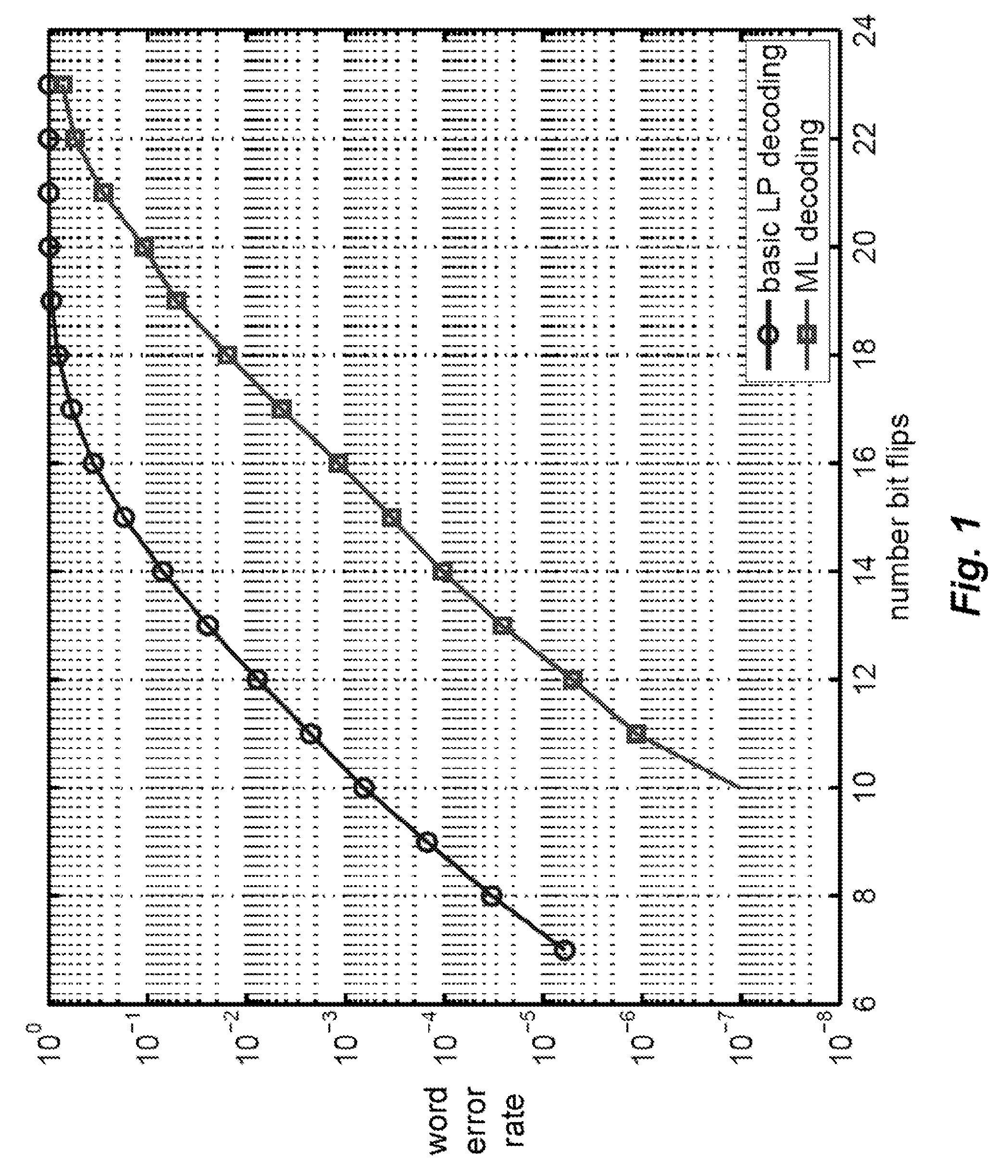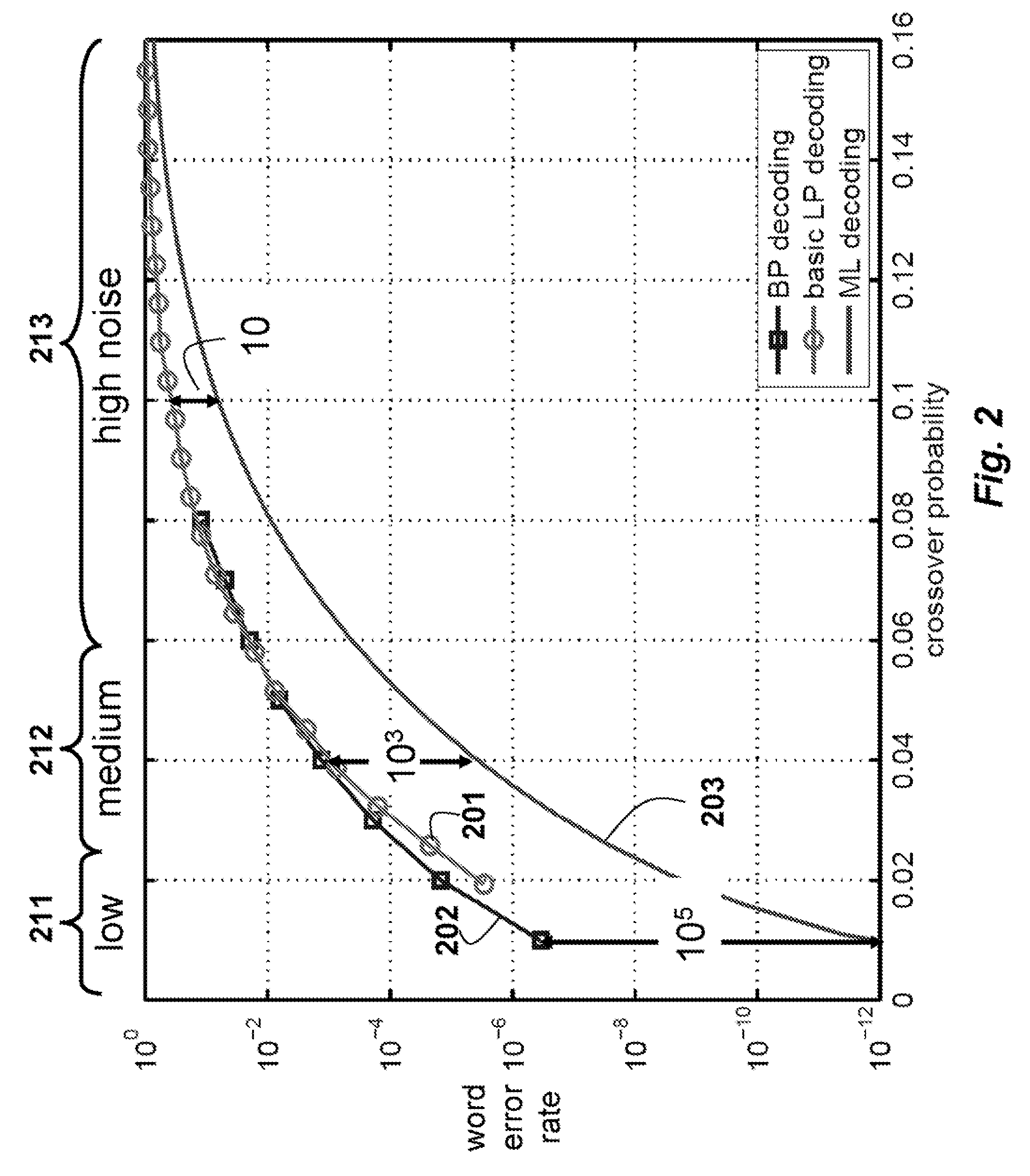Maximum Likelihood Decoding via Mixed-Integer Adaptive Linear Programming
a linear programming and maximum likelihood technology, applied in the field of optimal decoding of codewords, can solve the problems of inability to achieve useable ml decoders, and inability to achieve high-level decoding. the effect of low noise, increased decoding time and reduced error ra
- Summary
- Abstract
- Description
- Claims
- Application Information
AI Technical Summary
Benefits of technology
Problems solved by technology
Method used
Image
Examples
Embodiment Construction
[0040]Method Overview
[0041]FIG. 6 shows a method for decoding a sequence of symbols 607 received via a channel 601 to a codeword 605 of an error-correcting code 604 according to out invention. We begin with a sequence of symbols received via a channel 601. We presume that the channel can corrupt the symbols because of noise and other factors. Therefore, we use the error correcting code.
[0042]From the sequence of symbols we determine 602 log-likelihood ratios 603. We use the log-likelihood ratios to initialize 610 a set of constraints 620 for use in our adaptive linear programming decoder. The ALP decoder includes a number of procedures: a LP decoder 630 and a procedure for applying the current solution to the code 604 to find all violated constraints. If violated constraints are found 650, then the corresponding additional constraints 660 are used to update 670 the constraint set 620.
[0043]When no further violated constraints are found 650, then the result is an estimated ALP codewo...
PUM
 Login to View More
Login to View More Abstract
Description
Claims
Application Information
 Login to View More
Login to View More - R&D
- Intellectual Property
- Life Sciences
- Materials
- Tech Scout
- Unparalleled Data Quality
- Higher Quality Content
- 60% Fewer Hallucinations
Browse by: Latest US Patents, China's latest patents, Technical Efficacy Thesaurus, Application Domain, Technology Topic, Popular Technical Reports.
© 2025 PatSnap. All rights reserved.Legal|Privacy policy|Modern Slavery Act Transparency Statement|Sitemap|About US| Contact US: help@patsnap.com



